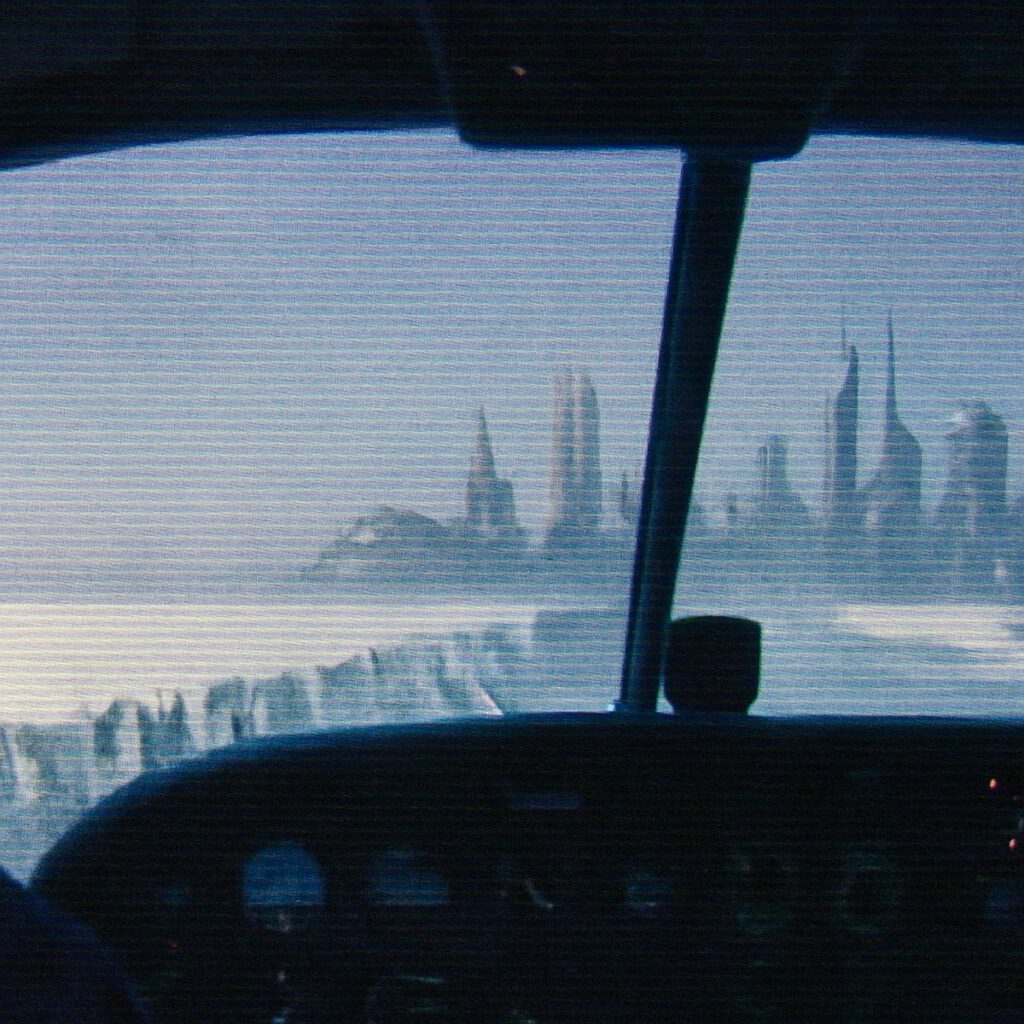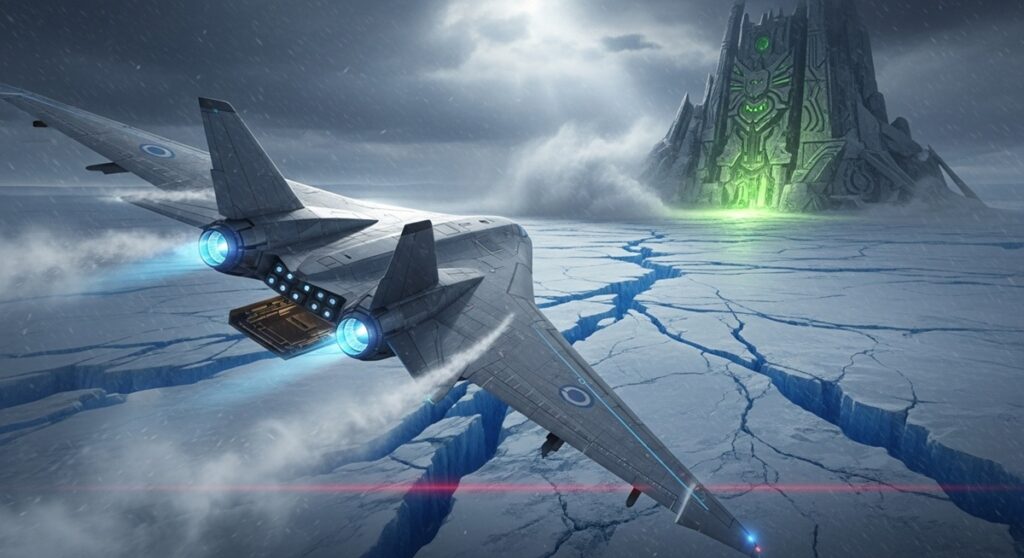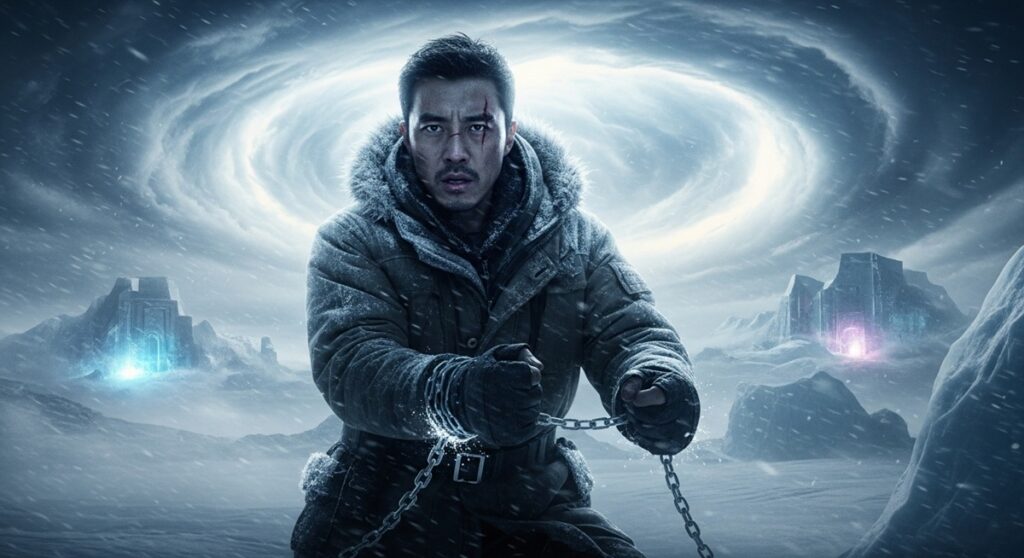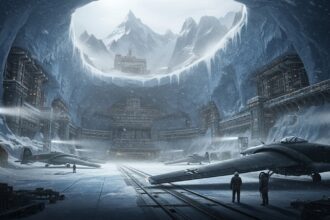In the vast, frozen expanse of Antarctica, where temperatures plummet and isolation reigns supreme, stories of mystery and intrigue have long captured the public’s imagination. From tales of lost civilizations to government cover-ups, the continent has been a breeding ground for speculation.
But few modern incidents have sparked as much debate as the case of Ethan Guo, the young pilot and travel influencer whose unauthorized landing in Antarctica led to detention, stranded weeks, and a swirl of online rumors. What did he see during his flight? Why was his journey interrupted so abruptly? And why has a narrative of hidden cities and interrupted live broadcasts taken hold?
Who Is Ethan Guo? A Profile of the Ambitious Young Aviator
Ethan Guo isn’t your typical teenager. At just 19 years old (turning 20 during his ordeal), this Memphis, Tennessee native has built a massive online following as a pilot-influencer. With over a million Instagram followers, Guo documents his daring flights around the world, blending adventure travel with philanthropy. His mission? To become the youngest person to fly solo to all seven continents while raising $1 million for St. Jude Children’s Research Hospital, inspired by his cousin’s battle with cancer.
Guo’s background is as impressive as it is unconventional. He earned his pilot’s license at a young age and has logged thousands of hours in the cockpit. His Cessna 182Q, a single-engine aircraft suited for long-haul journeys, has carried him across oceans and continents. Before Antarctica, he had already ticked off North America, South America, Europe, Asia, Africa, and Australia. Antarctica was the final frontier—a symbolic “end of the world” for his epic quest.
But Guo’s approach to adventure isn’t without controversy. Critics have pointed out his reliance on social media hype, where live streams and dramatic posts keep followers engaged. This blend of real risk and digital storytelling set the stage for what would become one of the most talked-about aviation incidents of 2025.
Early Life and Rise to Fame
Born in 2005, Ethan Guo grew up with a passion for aviation, influenced by family trips and early exposure to flight simulators. By age 16, he was soloing planes, and his Instagram account exploded during the pandemic as people craved virtual escapes. Posts from remote airstrips in the Amazon or over African savannas garnered millions of views. His cancer fundraising angle added a heartfelt layer, turning thrill-seeking into a noble cause.
Guo’s preparation for the Antarctic leg was meticulous—or so it seemed. He studied weather patterns, fuel logistics, and international aviation protocols. Antarctica’s harsh conditions demand specialized gear: de-icing equipment, survival kits, and precise navigation to avoid the continent’s no-fly zones and protected areas. Yet, as events unfolded, it became clear that not everything went according to plan.
The Fateful Flight: From Punta Arenas to the Frozen South
On June 29, 2025, Guo took off from Carlos Ibáñez del Campo Airport in Punta Arenas, Chile—the southernmost city in the world and a common gateway to Antarctica. His stated flight plan? A routine loop over the city. But according to Chilean authorities, this was a ruse. Midway through, Guo diverted his course southward, heading straight for King George Island in the Chilean Antarctic Territory.
This unauthorized detour violated multiple regulations, including Chile’s Aeronautical Code and international treaties governing Antarctic airspace. Antarctica isn’t just a free-for-all; it’s regulated by the Antarctic Treaty System, which prioritizes scientific research and environmental protection. Landing without permits can endanger lives, disrupt operations at research bases, and even spark diplomatic tensions.
Guo’s lawyer later claimed the diversion stemmed from “complications” mid-flight, describing it as an exploratory run to test the route. Prosecutors, however, saw it as deliberate deception. He landed at the Lieutenant Rodolfo Marsh Base, a Chilean outpost on King George Island, where he was immediately detained by local authorities.
The Role of Social Media in the Journey
Throughout his continent-hopping odyssey, Guo live-streamed segments of his flights, sharing cockpit views, weather updates, and personal reflections. His last Instagram post before the incident, dated June 23, showed him soaring over the Philippines. During the Antarctic flight, there are reports of him broadcasting live—though official accounts don’t confirm an interruption tied to any dramatic revelation.

Followers recall glimpses of icy landscapes and the thrill of approaching the continent. But here’s where facts blur into fiction: Some online accounts claim Guo’s stream captured something extraordinary—a massive ice wall and a hidden complex resembling a city. These descriptions echo flat-Earth theories, where Antarctica is portrayed as an encircling ice barrier hiding secrets. However, no verified footage from Guo’s stream shows such anomalies. Mainstream reports focus solely on the aviation breach.
The Interruption and Detention: What Went Wrong?
Thirty-five minutes after allegedly spotting the “unusual structures”—per unverified viewer accounts—the narrative suggests Guo’s broadcast cut off abruptly. In reality, any interruption likely stemmed from technical issues: poor satellite connectivity in polar regions or deliberate shutdowns due to the unfolding crisis.
Upon landing, Guo was detained for providing false flight information and unauthorized entry into Chilean territory. He wasn’t whisked away for “revealing truths” but held for legal reasons. Stranded at the base, he described his situation as “isolating and lonely” in later interviews. For over a month, from late June to mid-August 2025, Guo remained in Antarctica, facing charges that could have led to serious penalties.
On August 12, 2025, a Chilean judge dropped the charges, ordering Guo to donate $30,000 to a children’s cancer foundation—a fitting nod to his fundraising goal—and banning him from Chilean territory for three years. He was required to leave immediately, ending his unintended Antarctic stay.
Official Explanations vs. Eyewitness Claims
Authorities attribute the detention to straightforward violations: endangering air traffic and breaching protocols. Chilean Prosecutor Cristian Crisosto Rifo emphasized how Guo’s actions “seriously endangered the safety of air traffic to Antarctica and the Magallanes region.”
Yet, online forums buzz with alternative narratives. Viewers from a purported live stream—watched by thousands across dozens of countries—claim they saw iridescent towers and skyscraper-like forms behind a 180-meter ice wall. Some speculate optical illusions or mirages, common in polar atmospheres where light bends unpredictably. Others point to abandoned research bases, like those from the Cold War era, mistaken for something grander.

No full recording of the broadcast survives in public domains; fragments circulate in closed chats, their authenticity questionable. Guo himself hasn’t commented on seeing anything unusual, focusing instead on his release and continuing his mission.
Theories and Speculations: From Conspiracy to Atmospheric Phenomena
The Ethan Guo saga has fueled a firestorm of theories, blending real events with age-old Antarctic myths. Why the fervor? Antarctica’s remoteness invites speculation—think Nazi bases, UFO hideouts, or even ancient civilizations preserved in ice.
The Conspiracy Angle: Hidden Cities and Cover-Ups
A viral Facebook video titled “What Did Ethan Guo See in Antarctica Before He Was Detained?” amplifies claims of a massive complex hidden behind an ice wall. Proponents argue Guo stumbled upon restricted zones, perhaps military installations or extraterrestrial evidence, leading to his swift detention. The pre-scheduled social media post—”If you’re reading this, I’m gone. They got rid of me for showing the truth”—is cited as proof, though skeptics dismiss it as marketing hype.
This narrative draws from flat-Earth lore, where Antarctica is an ice rim guarding the planet’s edge. Historical context adds fuel: During Operation Highjump in 1946-47, U.S. forces explored Antarctica amid rumors of secret bases. More recently, satellite anomalies and restricted Google Earth views spark suspicion.

Experts like polar scientist Dr. Julie Palais (formerly with the NSF) explain such “sightings” as pareidolia—seeing patterns in random formations—or superior mirages, where distant objects appear elevated.
Scientific and Rational Explanations
Meteorologists note that Antarctic conditions can create fata morgana mirages, distorting horizons into tower-like shapes. Guo’s flight path over the Drake Passage, known for turbulent weather, could have amplified visual tricks.
Aviation analysts stress the real issue: Unauthorized flights risk collisions with research aircraft or environmental harm. Similar incidents, like a 2018 tourist plane buzz in a no-fly zone, resulted in fines but no conspiracies.
Guo’s own updates post-release emphasize gratitude and lessons learned, with no mention of hidden discoveries. His Instagram now features reflections on resilience, steering clear of sensationalism.
Aftermath and Current Status: Where Is Ethan Guo Now?
Guo is back in the U.S., resuming his life and advocacy. He’s raised significant funds for cancer research, though short of his $1 million goal. The incident hasn’t derailed his ambitions; if anything, it’s boosted his profile, with media appearances on CBS and BBC.
The lack of official comments on “sightings” suggests nothing extraordinary occurred. Guo’s team has addressed the ordeal as a “misunderstanding,” focusing on positive outcomes like the mandated donation.
Yet, the story lingers in online echo chambers. Forums dissect fragments of alleged footage, and petitions call for “transparency” in Antarctic operations. Whether Guo saw a mirage, a base, or nothing at all, his tale underscores the fascination of the unknown.
Lessons from the Ice: Aviation, Adventure, and Accountability
What dark secrets lurk beneath Antarctica’s frozen veil, waiting for the bold—or the reckless—to uncover them? Ethan Guo’s daring plunge into forbidden skies whispers of unseen perils, where pushing against invisible boundaries might summon forces far beyond human control. Aspiring explorers, heed the chilling ancient voices: in this fragile, whispering wilderness, one wrong turn could awaken ancient guardians, blurring the line between thrill and terror.

In a world starving for forbidden knowledge, Guo’s flight dangles tantalizing questions—what if the rules we cling to are mere illusions, hiding metropolises of shadow and ice? The debates swirl like blizzards, fueling the fire of Antarctica’s deepest riddles, leaving us to wonder: is the truth out there, or has it already claimed its next victim?
Broader Implications for Antarctic Exploration
Beneath the surface of over 70 shadowy research stations scattered across this desolate realm, where scientists from 30 nations probe the unknown—from vanishing climates to starlit voids and hidden life forms—what unseen agendas truly drive their vigil? Guo’s intrusion stirs a storm, hinting at the fragile threads holding back chaos, where stricter veils of oversight might conceal as much as they protect this eerie, untouched domain. As shadowy tourists flock in droves—over 100,000 souls drawn annually to its icy embrace—the scales tip precariously: how long before the balance shatters, unleashing what should never see the light?
Unraveling the Antarctic Mystery
Was Ethan Guo’s Antarctic veer a mere spark of youthful fire, or did it brush against cosmic veils that bureaucrats dare not name? He glimpsed the continent’s haunting allure, yet whispers of concealed cities echo like ghosts in the wind—unproven, yes, but what if they’re the fragments of a forbidden reality? His chains weren’t forged from simple laws, but perhaps from the desperate grip of those guarding unspeakable truths. As the frost clears, Guo steps forth, forever marked, his tale a web of allure and dread that pulls you deeper.

For those lured by polar sirens, beware: Antarctica’s true enigmas may not dwell in science’s cold grasp, but in the endless shadows that swallow the unwary whole.

















